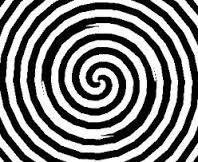 Our friend Helena ran a ´Self Hypnosis´ class recently.
Our friend Helena ran a ´Self Hypnosis´ class recently.
After the practice she answered questions about the suitability of the practice for different desired outcomes and environments. An obvious question from one of us was about whether the practice could be utilized in the water for as a tool for freediving training, the answer was “Yes”. Self hypnosis, Helena told us, is not about being put to sleep like the popular image of ´Classical Hypnosis´. Classical Hypnosis only works on some people and the stage hypnotist has a number of assessments to find who in the audience can be influenced. Self hypnosis can be achieved by anyone and the trance state can be induced whenever convenient, and the person is completely awake for the duration. This style is called Modern Hypnosis or Ericksonian Hypnosis after Milton Erickson.
Helena is a GP and has used these techniques to help patients. She explained that in daily life we generate beta-waves (β-waves) that are very fast and notice a lot of the data around us but don’t retain it. In the trance state on which she focuses we generate alpha-waves (α-waves). These are slower and remember everything. Things done while in an alpha state are better remembered. Another form used by practitioners is the deeper trance of theta waves (θ-waves). For treating a trauma that it is not beneficial to remember the practitioner can help the patient into this deep trance. The practitioner can speak to the patient and discover a cause of trauma or a solution to a problem. Once out of the trance the patient will not remember the episode, hence not reinforcing the problem, and the solution can begin to work.
We are interested in being awake and accessing valuable resources J
Here’s the procedure:
1) Ask for a resource. (You have to really want it) And give a time frame (i.e. 2mins)
2) Pick a visual point 45° above normal line of sight.
3) Relax! (legs, back, neck and jaw and tongue)
4) Looking softly in your 45° direction acknowledge what you can see, near and far, say to yourself 5 things. Things from your direct vision and from your peripheral. Then say 5 things you can hear; loud, soft, bodily and external. Then say 5 things you can feel; temperature, discomfort, clothing, breadth.
*While you say these things your voice must be of a lower register and slower than normal*
5) Starting with 5 sights, 5 sounds, 5 sensations Then, 4 sights, 4 sounds, 4 sensations Then, 3 sights, 3 sounds, 3 sensations Then, 2 sights, 2 sounds, 2 sensations Then, 1 sight, 1 sound, 1 sensation.
By the end you will allow your eyes to close and allow the trance state to function. If the eyes close before the end of the cycle all well and good, then continue using whatever slight colours or spots of light as reference.
If the complete round of sights, sounds, sensations isn’t enough go through the cycle again. With experience the practitioner can succumb to the trance earlier, perhaps even before the first line of sights, sounds, sensations!
Deepening Techniques:
After the practice Helena showed us some deepening techniques. If, for example, you were guiding a friend through it you could count slowly down from 10 to 1 (counting up has the effect of awakening or energising). If you wanted to deepen your own trance you could observe your palm from a medium distance. As you very slowly bring the palm towards the face continue to focus softly on the lines, contours, colours, shadows, taking everything in. When the palm reaches the face and touches softly you can allow yourself into the trance.
Please let us know how you get on with this training, one of possible many supplementary tools for freediving training.
—
www.apneista.com
